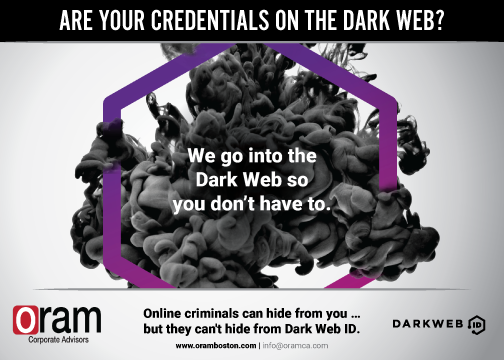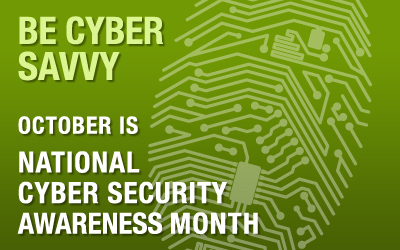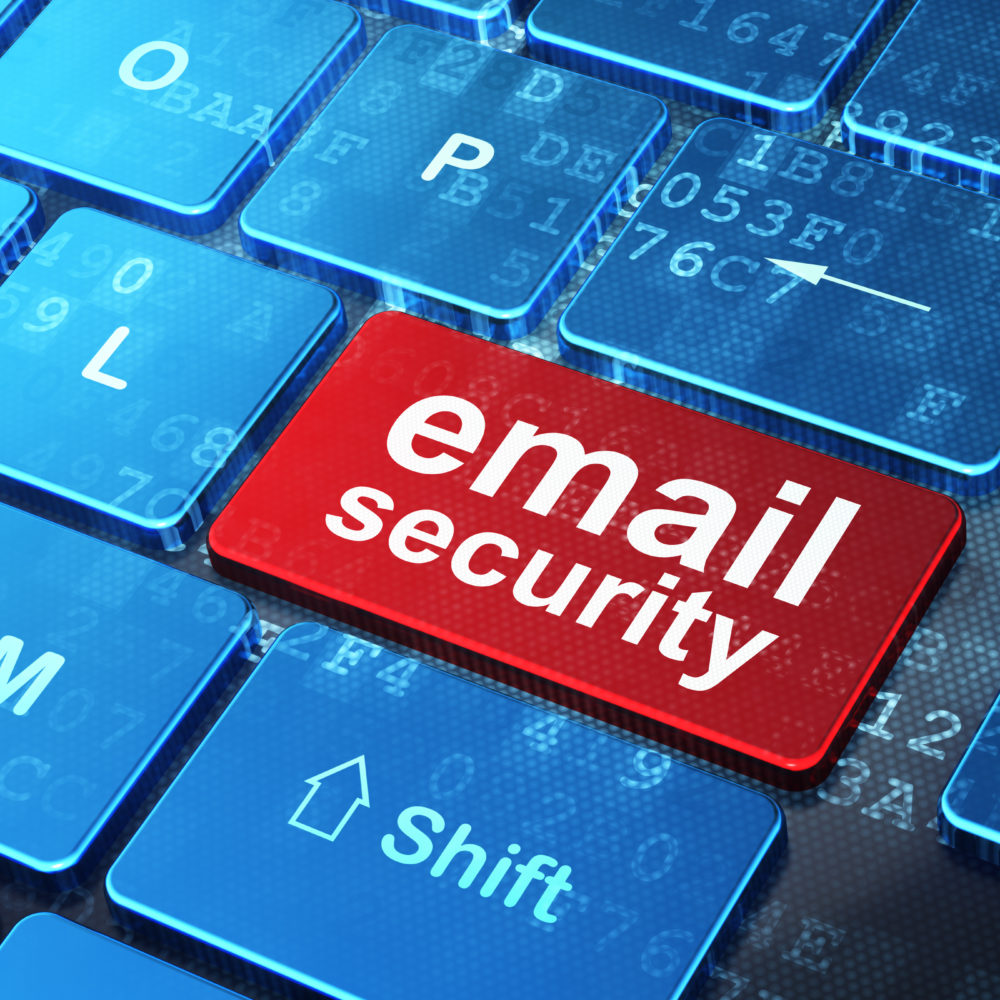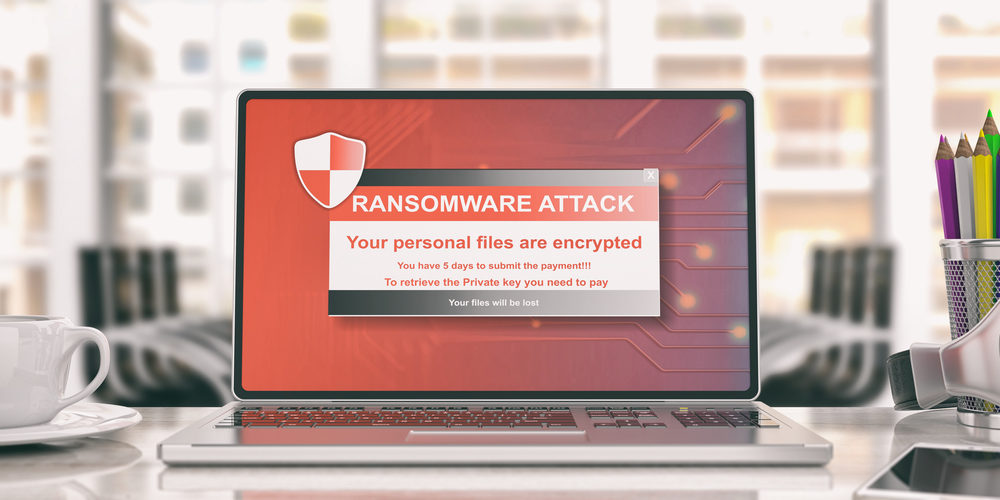The Dark Web sounds like the name of Hollywood’s latest horror movie. In reality, it is something much scarier. It can rob your business, negatively impact employees, and shutter companies.
While you can’t see it, the Dark Web is a huge threat to the stability and continuity of business. Knowing what it is and why it is threatening is the first step to protecting what you have built with hard work and dedication. Here is what you need to know about the Dark Web, why it’s so dangerous, and ways to best protect your organization.
What is the Dark Web?
The Dark Web is the shady side of the World Wide Web. Digital communities on the Dark Web are accessible with special software that allows users and those operating dark websites to remain anonymous and untraceable. While it offers some legitimate uses, it is estimated that more than 50 percent of all sites on the Dark Web are employed in criminal activities. This can mean everything from the theft of digital credentials to their disclosure through sale.
Your Credentials
Digital credentials such as usernames and passwords keep you and your employees connected to critical business applications, email, and other online services. Criminals know that if they can get those credentials, they can access everything from your business’s list of clients to your trade secrets and funds. This means digital credentials are some of the most valuable pieces of information floating around the Dark Web.
Credential Theft
Criminals steal credentials from login information for social media platforms such as Facebook to dates of birth and credit card numbers. The problem is that many individuals and companies often fail to realize their credentials have been stolen until it’s too late.
In more than 75 percent of cases, it is law enforcement or another third-party that notifies a victim that something is amiss. By then, it’s usually too late to prevent data theft or a serious breach that could stop your company in its tracks, lead to a loss of customers, or even bankrupt your business.
Human Resources and Payroll
Your business relies on its human resources and payroll department(s) but these valuable individuals are some of the biggest risks to your organization’s digital security. When they utilize their work email to access websites and programs such as ADP, Paychex, and Ceridian, it can open the door for criminals who have stolen their credentials.
Cybercriminals can use their stolen information to heist the personally identifiable information (PII) of other employees, access payroll information, and even steal from the company coffers. Such breaches can also lead to other criminal activity such as the identity theft of employees or customers.
Client Relations Management
The client relations management (CRM) tool your business uses allows you to communicate seamlessly with your customers. This is great for your business and it’s great for cybercriminals, too.
Pretend for a moment that you have used the same password for your eBay account as you do for your business’s HubSpot. If a hacker steals your eBay credentials, they can access your business’s HubSpot. They can now send an email to your clients pretending to be you. The hacker can ask your clients for anything they want from money to their PII. This can ruin your name and reputation with your clients and within your industry as well as that of your company.
Communications
Another risk lays in your company’s communications from Verizon to Adobe and T-Mobile. For example, if someone wants to hack your AT&T account, they may be able to reveal your payment information from a bank account or credit card. Now they have access to your accounts and can steal money from you and/or your business. Using your mobile number, they can also spoof text messages, reset your bank account password, and access your cash as well as other websites, social media platforms, and other apps you utilize.
Business tools such as email services can also become hacked with the theft of employee credentials. Whether your company uses Gmail, Yahoo, or Office365, these are all hackable. Once someone has access, they can send spoofed emails to clients pretending to be you or an employee asking for more information or even money.
Collaboration
While collaboration among employees, contractors, and vendors is typically considered a positive attribute in business, it can also put your organization at risk. Many individuals and businesses today use Dropbox as a great method of file sharing and collaboration. Such files often contain a plethora of valuable information including trade secrets, PII, and client data. A hacker can use this information to spoof emails, gather data from clients, and target them as their next victims.
Travel Services
If your business employs a travel service to help them get from point A to point B, this can be another security risk. Companies such as Expedia, Travelocity, and Orbitz typically store your credit card information along with other PII that can be devastating in the event they are breached.
Be sure to employ different login credentials for each of these websites to best protect yourself and your business. Use multi-factor authentication if it is offered and don’t store your billing information with these sites if given this as an option.
E-Commerce
Whether your company orders office supplies online from Staples/Office Depot or your business sells products through Amazon/eBay, this is yet another area of risk. Again, stolen credentials can allow for the theft of PII and access to financial information that can drain your bank account before you realize what has happened.
Banking & Finance
Programs such as QuickBooks or Freshdesk or banking apps from financial organizations such as Bank of America or Wells Fargo can also lead to problems when it comes to credentials. If a hacker steals access to your bank accounts, credit cards, or financial programs, it can be truly devastating for your business.
Imagine having all of your accounts wiped out. How will you pay your employees, cover your business mortgage, or pay out contractors? Once the money is gone, the likelihood you will ever see it again is minimal, as hackers can be very difficult to trace and, even if you do get it back, how will you cover your business expenses in the meantime?
Social Media
If your employees or business are on social media, which most are, this can put your business at higher risk for a breach. Pages on social media can be easily spoofed or copied. A cybercriminal can invite your friends and followers, steal their information, and worse. This can ruin your reputation whether the hacker takes an unpopular political stand on the false page or accesses more people to victimize through spoofing of their personal or business pages.
Other Employee Risks
In addition to the threat of employees having their work credentials stolen, their personal credentials can also put your business at risk if they end up in the wrong hands. For example, if an employee uses their LinkedIn credentials such as their username and password for work in QuickBooks, they can expose your company to a breach. Employees should be trained to use unique usernames and passwords for each program, app, and website they use. This is true not just for work but also for their private internet use as well.
While it can be cumbersome to keep track of different usernames and passwords for each website or app they use, there are password management tools such as MyGlue or LastPass that can keep track of them all. While some of these password management programs are free, some do have a minimal cost associated with them. Remember, you get what you pay for in business. Some of the free apps are poorly encrypted locally on your own device so if you get hacked, the bad guys will still have access to your information. We advise working with a larger company so you know they have the manpower and ability to keep your information safe and secure.
Users often have the same password for multiple services such as network logons, social media, and online stores. This greatly increases the potential for a breach. Train and retrain your employees on cybersecurity. It is worth the investment as is paying a small annual fee for a secure password management tool. Consider this well spent money as an operating expense just as you do with your marketing budget.
Combating the Dark Web
At Oram, our experts are able to search the Dark Web so you don’t have to. Using Dark Web ID from ID Agent, our experts search for your personally identifiable Information (PII) on the Dark Web to determine if you are at risk of experiencing a breach. This gives you time to protect your information, notify your bank or lender, and change passwords before you experience a breach.
How Dark Web ID Works
Dark Web ID is a commercial solution to detecting compromised credentials in real time on the Dark Web. It offers the same advanced credential monitoring capabilities that are employed by Fortune 500 companies. This specially designed software connects to multiple Dark Web services including Tor, I2P, and Freenet where it searches for compromised credentials. With this proprietary software, you don’t have to expose your own software, hardware, or network to these high-risk services directly.
By searching the most secretive and covert corners of the internet, Dark Web ID locates compromised credentials associated with your business, contractors, and personnel. If we find credentials that compromise your company, we notify you immediately BEFORE you become the victim of identity theft, data loss, or a breach. The real-time awareness of compromised credentials Dark Web ID provides means you will know if your PII has been stolen so you can safeguard both your personal and business assets before it’s too late.
Be Prepared
The more information you have, the more valuable it is and the more prepared you can be. We employ extensive logging and reporting capabilities that allow us to track your credentials and the credentials of your employees on the Dark Web. As a result, we can triage incidents quickly and create effective policies and procedures to reduce the risk to your business.
How It Helps Businesses
We use the Dark Web ID as a tool to identify compromises throughout your organization that could put your company at risk for a data loss or major breach. With this software, we are able to monitor the Dark Web 24 hours a day, seven days a week, 365 days a year. It is so effective, it reports more than 80,000 compromised emails daily. In addition to email, the program searches and monitors the following platforms frequented by cybercriminals:
• Hidden chat rooms
• Private websites
• Peer-to-peer networks
• Internet relay chat (IRC) channels
• Social media platforms
• Black market sites
• 640,000+ botnets
Predictable Patterns
While it is good practice to be prepared for a breach, it’s even better to have a warning that one could be coming. Using Dark Web ID, we can identify industry patterns. If we see that your industry is starting to come under attack, we can share that intelligence with you to best protect your employees, your business, and your consultants.
Prevention is the Best Medicine
While a network attack may be inevitable, they can be made less destructive and costly. With proactive monitoring of stolen and compromised credentials, you can be alerted to prevent losses before they happen. With alerts that tell you when your credentials have been stolen, you can respond immediately to prevent a breach.
By employing monitoring services and software such as Dark Web ID, your company can move toward compliance with data breach and privacy laws. Our experts can even help you develop and implement a data breach response plan.
If you would like more information about the Dark Web, Dark Web ID, or reducing cyber risks to your business, please call Oram today at (617) 933-5060 or visit us online.




